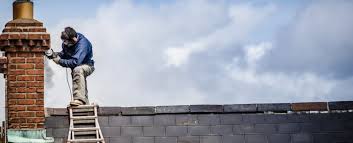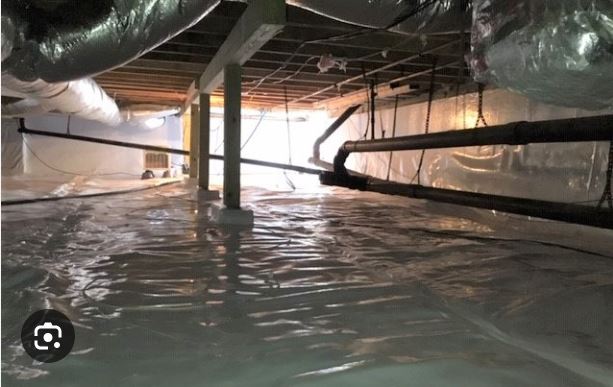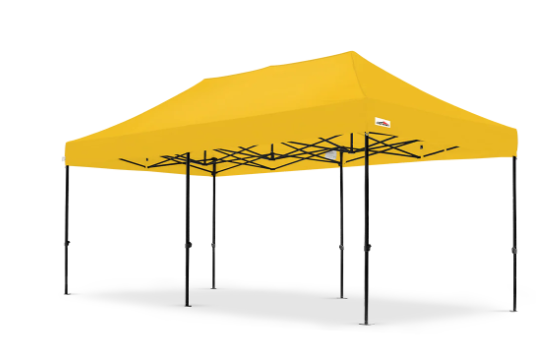
borders Tagore's POSTECH
Many homeowners overlook their chimneys’ condition until something obvious demands attention. The truth is that chimneys play a critical role in home safety and efficiency, especially during the colder months when fireplaces and stoves are in regular use. We will explore how recognizing the early signs of chimney trouble can prevent more serious issues from developing. A chimney that isn’t functioning properly can lead to smoke backing into the house, higher energy bills, or even dangerous gases entering your living space.
What might begin as a small crack or minor discoloration could lead to costly damage if not addressed promptly. Staying aware of the chimney’s condition and responding to warning signs early can make the difference between a minor fix and a major repair project. Even if you’re not actively using your fireplace year-round, seasonal weather can cause wear and tear. Understanding these indicators means you’ll be able to act quickly, keeping your home safer and your chimney functioning reliably.
The early signs of chimney trouble
- Visible Cracks or Gaps in the Masonry Structure
One of the most evident signs that your chimney may need repair is the appearance of visible cracks or crumbling mortar between bricks. These can be subtle at first—just a thin line here or a small chip there—but they’re a sign that moisture has found its way into the structure. Water is one of the most damaging elements to brick and mortar. It seeps into tiny openings, then expands and contracts with changing temperatures. Over time, this repeated stress leads to spalling, which is when pieces of the brick begin to flake off.
Left unchecked, the damage worsens, compromising the chimney’s ability to stand upright or properly vent smoke. Gaps in mortar also allow water to infiltrate deeper into the system, affecting internal components like the flue liner. Regularly checking the chimney’s exterior can help spot these issues before they become serious. If you see gaps or missing chunks in the masonry, it’s not just a cosmetic issue—it’s a signal that the structural integrity is beginning to weaken. Moisture damage also promotes mold growth in adjacent areas, including attic spaces or wall cavities. Acting quickly to address cracked masonry can prevent costly repairs and ensure your chimney remains a solid and functional part of your home.
- White Staining or Efflorescence on Chimney Walls
Efflorescence, or white staining on the chimney surface, is another subtle yet important indicator of moisture issues. These stains are caused by water drawing salts from within the brick or mortar and depositing them on the outer surface as the moisture evaporates. While the white powder may be easy to wipe away, it indicates that water is infiltrating the structure. Over time, moisture can cause mortar joints to deteriorate, bricks to lose strength, and internal components like the damper to rust. Efflorescence often appears on chimneys that are not adequately capped or sealed.
A faulty crown or missing chimney cap can allow rainwater to enter the system, leaving this visible residue. While the stain might not seem serious, it should never be ignored. It reflects deeper moisture penetration that can eventually cause interior damage, including wall stains and ceiling leaks. If you spot white patches forming on the brick, evaluating the chimney before more significant problems take root is a good idea. Ignoring the issue only gives time for moisture to spread and weaken other parts of the home. Addressing efflorescence early helps preserve the chimney’s lifespan and maintain the appearance and function of your home’s exterior.
- Loose or Missing Chimney Components
Your chimney includes several external components that serve both protective and functional roles. The chimney cap, flashing, and crown are critical to keeping moisture, animals, and debris out of the system. The entire chimney is vulnerable if any of these pieces become loose or go missing. The cap, for instance, prevents rainwater from entering the flue while also keeping birds, squirrels, and leaves from building up inside. Flashing, which seals the area where the chimney meets the roof, must remain tight and watertight to prevent leaks into the attic or walls.
The crown tops off the chimney and needs to slope properly to shed water. When these elements degrade, it’s not always immediately apparent. You might notice water pooling near the base of the chimney after rain, hear the sound of rustling animals inside the flue, or spot signs of water damage in your attic. These symptoms all point to compromised chimney components. Over time, neglected flashing or missing caps can lead to serious water intrusion, mold growth, and even interior drywall and insulation damage. Routine inspection of these elements can catch early signs of trouble. Replacing or resealing a damaged component is much more manageable than dealing with the aftermath of widespread water damage.
- Smoke, Odors, or Draft Issues in the Living Space
When your chimney isn’t functioning correctly, you’ll often notice changes in how the smoke travels or your living room smells during or after a fire. These performance issues are usually tied to internal problems like flue blockage, creosote buildup, or a failing damper. If smoke drifts into your living space instead of rising through the chimney, it may indicate a blockage or obstruction that disrupts the airflow. A backdraft can also occur if the chimney has developed cracks or internal damage that alters how air moves through the system. Odors, especially during rainy weather, are another sign.
A musty, sooty smell often means that moisture has combined with creosote deposits inside the flue, creating a pungent residue that lingers in the air. These problems may not be visible from the outside, but they affect the comfort and safety of the home. Inhaling smoke or toxins from an improperly vented fireplace can lead to health issues, especially for children or those with respiratory conditions. Maintaining proper chimney function ensures your fireplace remains a cozy addition to your home instead of becoming a source of indoor air pollution. Scheduling routine evaluations or seeking chimney repairs by Affordable Tuckpoiningcan help prevent such performance problems and extend the life of your system.
Paying attention to the early warning signs of chimney problems is one of the simplest ways to avoid costly repairs and ensure safety. Whether it’s a visible crack in the masonry, staining from water exposure, missing components, or performance issues during use, each symptom tells a story about the condition of your chimney. Addressing problems while they’re still manageable can prevent them from escalating into major repairs.
It also helps preserve the structural integrity of your home, reduces health risks, and keeps your heating system running efficiently. Chimneys may appear strong and resilient, but even the most minor issue can grow over time without proper care. By staying alert and proactive, homeowners can enjoy peace of mind knowing their fireplace and chimney are functional and safe. Don’t wait for a disaster to take a closer look—those early signs are your opportunity to take control and protect your investment.
Write and Win: Participate in Creative writing Contest & International Essay Contest and win fabulous prizes.


